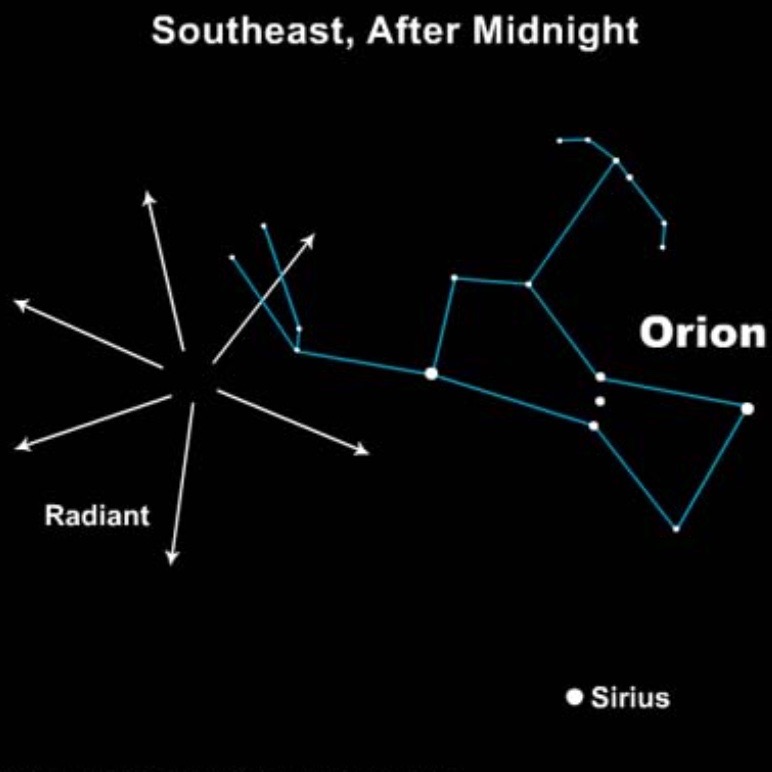Orionid meteor shower: All you need to know (earthsky.org)
Posted by Deborah Byrd
October 20, 2021

The Orionids radiate from a point near the upraised Club of the constellation Orion the Hunter. The bright star near the radiant point is ruddy, somber Betelgeuse. You might catch an Orionid meteor any time between about October 2 to November 7. In 2021, the peak morning is October 21, but, around then, the full or nearly full Hunter’s Moon will be shining brightly.
Orionid meteor shower peaks in moonlight
From about October 2 to November 7 each year, Earth is passing through the stream of debris left behind by Comet Halley. This famous comet is the parent comet of the Orionid shower, whose expected peak in 2021 is the morning of October 21. Bad news for Orionid fans this year, though. The 2021 full Hunter’s Moon is October 20. So moonlight will flood the sky all night, or nearly all night, during the Orionids’ peak.
What to do? Some avid meteor-watchers will trying watching in moonlight. If that’s you, be sure to watch in a dark location. And try placing yourself in a moon shadow: the shadow of a tree or barn. Or sit in your car’s shadow. You’ll see a few more meteors that way than if you than bask in direct, bright moonlight.
And, as for most meteor showers, the hours between midnight and dawn are best for the Orionids.
The term meteor shower might give you the idea of a rain shower. But few meteor showers resemble showers of rain. And the Orionids aren’t the year’s strongest shower, anyway. Plus they’re not particularly known for storming (producing unexpected, very rich displays). From a dark location, in a year when the moon is out of the way, you might see 10 to 20 Orionids per hour at their peak. Will you see that many in 2021? Not likely. There’s always the element of uncertainty and possible surprise when it comes to meteor showers. But no one expects that many Orionids to overcome the moon’s glare during 2021’s shower.
***
more: https://earthsky.org/astronomy-essentials/everything-you-need-to-know-orionid-meteor-shower/?utm_source=EarthSky+News
